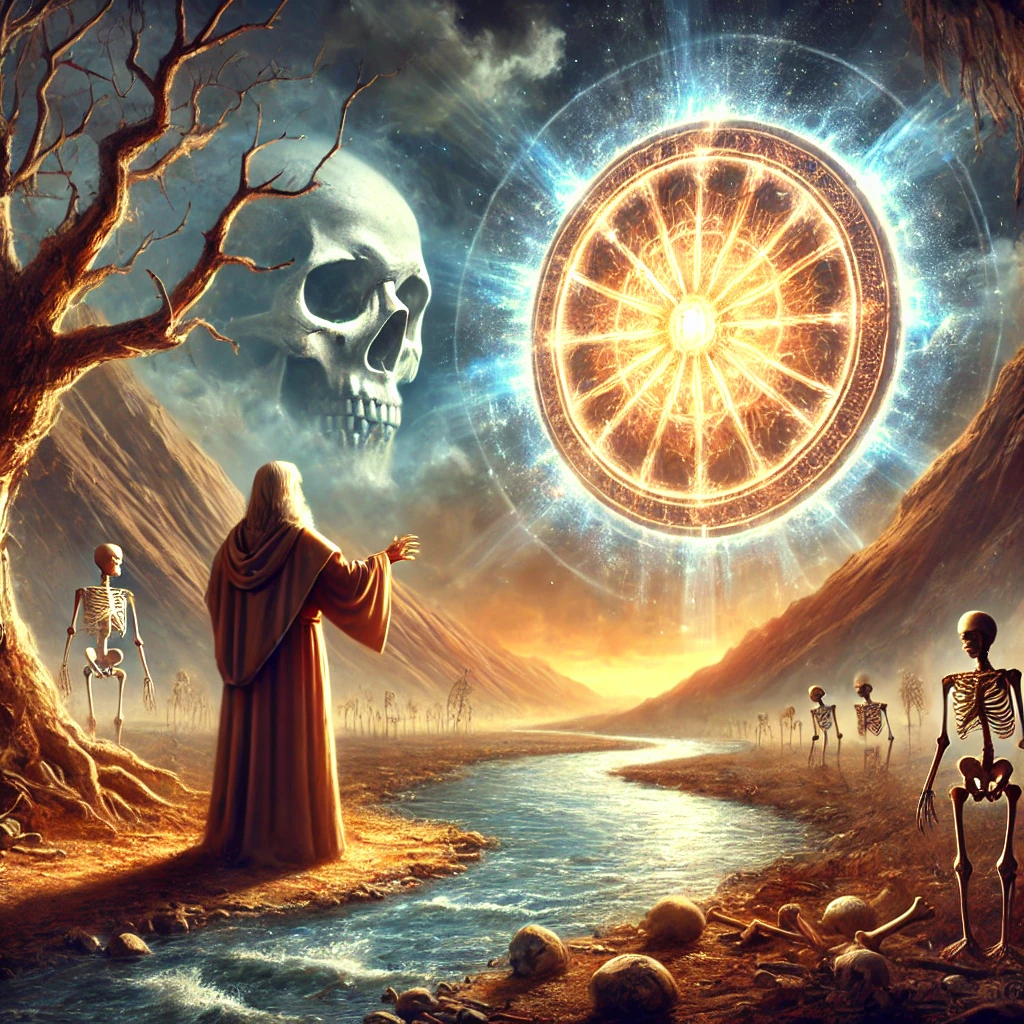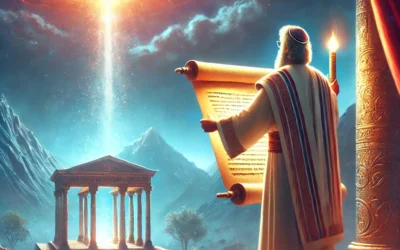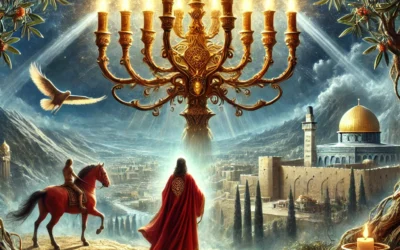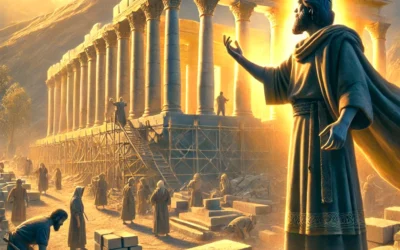The Book of Ezekiel is the twenty-sixth book of the Bible and the third of the Major Prophets.
Written by Ezekiel, a priest and prophet who was taken into exile in Babylon, this book is known for its dramatic visions, symbolic actions, and powerful messages of both judgment and hope.
Ezekiel’s mission was to warn the exiled people of Israel, explain why judgment had come, and give them hope of future restoration and renewal.
Ezekiel’s Calling and Visions of God (Ezekiel 1–3)
The book opens with a mind-blowing vision of God’s glory—wheels within wheels, four living creatures, and a throne.
Ezekiel is commissioned as God’s watchman.
Key Highlights:
- Ezekiel sees the glory of the Lord coming in a storm and fire.
- God gives him a scroll to eat, symbolizing the internalizing of God’s message.
- He is appointed as a watchman for the House of Israel.
Lesson: God reveals Himself in glory and calls His messengers to speak boldly—no matter the opposition.
Judgment on Jerusalem and the Exiles (Ezekiel 4–24)
God commands Ezekiel to act out symbolic prophecies of the coming destruction of Jerusalem and the temple.
Key Highlights:
- Ezekiel lies on his side, cooks with dung, and shaves his hair—all as signs to the people.
- He explains that Israel’s sin and idolatry led to the coming judgment.
- The glory of the Lord departs from the temple, showing God’s sorrowful withdrawal.
Lesson: God is patient, but persistent rebellion leads to judgment—and His presence cannot dwell where sin reigns.
Judgment on the Nations (Ezekiel 25–32)
Ezekiel pronounces God’s judgment not only on Israel but also on surrounding nations like Ammon, Moab, Edom, Tyre, Egypt, and others.
Key Highlights:
- These nations are judged for pride, violence, and rejoicing over Israel’s fall.
- Tyre’s fall is vividly described, including a lament over its king—often interpreted as a symbol of Satan’s pride.
Lesson: God is the ruler of all nations, and He holds them accountable for injustice and pride.
Hope and Restoration for Israel (Ezekiel 33–39)
After the fall of Jerusalem, Ezekiel’s message shifts to restoration and renewal for God’s people.
Key Highlights:
- God promises to give Israel a new heart and a new spirit (Ezekiel 36:26).
- The famous vision of the valley of dry bones (Ezekiel 37) shows God’s power to bring life from death.
- Israel and Judah will be reunited, and God will dwell with them again.
- Prophecies against Gog and Magog depict final future battles and God’s ultimate victory.
Lesson: No matter how dry or broken things seem, God can bring new life, unity, and peace.
The Vision of the New Temple and God’s Glory (Ezekiel 40–48)
The final chapters describe a future temple, a restored land, and the return of God’s glory to dwell with His people forever.
Key Highlights:
- Ezekiel is shown the measurements of a new temple filled with God’s presence.
- The river of life flows from the temple, bringing healing to the land (Ezekiel 47).
- The city will be called: “The Lord Is There” (Yahweh Shammah) (Ezekiel 48:35).
Lesson: God’s ultimate desire is to dwell among His people in peace, purity, and restoration.
Final Thoughts
The Book of Ezekiel reminds us of the seriousness of sin, the glory of God, and His desire to renew, restore, and dwell with His people.
Through breathtaking visions and bold prophecy, Ezekiel points us to a future full of life, healing, and divine presence.





